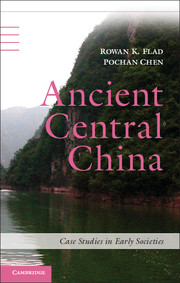Part I - Setting the Stage
Published online by Cambridge University Press: 05 February 2013
Summary
Setting the Stage
Our understanding of diachronic change in the landscape of Central China is structured by two underlying topographies: (1) the environmental context within which societies developed in the region and (2) the topography of archaeological historiography – the history and development of archaeological research in a region. These two topographies have changed over time – the former contemporaneously with the time periods on which this book focuses and the latter throughout the course of archaeological research in the region. In these two chapters, we examine these topographies and their trajectories of change.
Environmental topographies, discussed in Chapter 2, are defined by the physiographic conditions within which human societies were established and developed. The environmental conditions include the physical geography and the climatic conditions that influenced the means by which communities interacted, the natural resources to which people had access, and the extrasocial factors that sometimes played a major role in shaping human society. Physical geography helped define routes of communication and barriers to movement. Climate, hydrology, and other dynamic aspects of the environment all contributed to a varied landscape of risks and rewards that affected human behavior. Our understanding of these dynamic factors is imperfect, of course, because it depends on data that are as fragmentary as the archaeological record. Nevertheless, we are able to outline the environmental changes that would have affected communities in Central China during the period of focus in this book, and we are able to identify those aspects of the physical environment that would have made certain locations hospitable to settlement (such as availability of water and other natural resources) and those factors that would have made other locations less desirable (including swamplands, propensity for flooding, and difficulty in acquiring resources).
- Type
- Chapter
- Information
- Ancient Central ChinaCenters and Peripheries along the Yangzi River, pp. 17 - 18Publisher: Cambridge University PressPrint publication year: 2013



